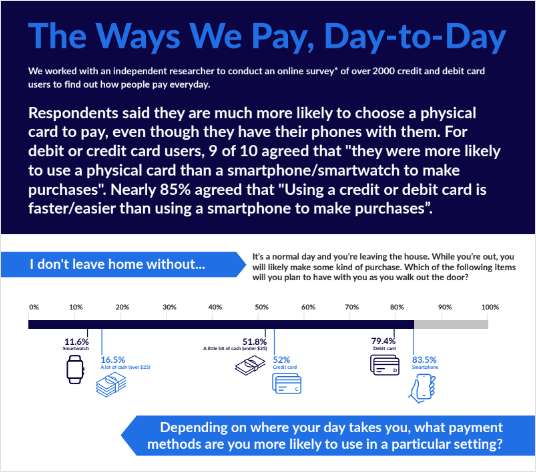ARLINGTON – This year is the last one in the foreseeable future in which the National Credit Union Foundation will make grants to individual credit unions, according to a Foundation executive, opting instead to let state leagues and foundations fund more discrete efforts. That change, combined with reductions in federal funding for many credit unions, promises to significantly change the credit union funding landscape. “It's the difference between being able to help tens of credit unions and helping hundreds,” explained Bruce Wheeler, Director of Grants and Communications for the Foundation. “The Foundation board felt that as a national funding resource for credit unions, the Foundation's resources could be better targeted at certain questions that face credit unions nationwide,” he added. Since 1999, the NCUF has disbursed roughly $3.4 million to individual credit unions and the state foundations and leagues. Wheeler said that the NCUF staff had not yet decided which nationwide problems might draw the Foundation's funding attention, but said the board had asked for staff recommendations before the end of 2003. Possible topics include payday lending alternatives, check cashing services and some developmental topics, he explained. The NCUF's funding mechanism follows what some find to be a complicated formula of investments and disbursements. Credit unions in over 30 states invest money through their corporate credit unions in the Foundation's Community Investment Fund, according to Wheeler. In return the investing credit unions receive the first 2% of their investment's earnings. The CIF receives the second 2%, which it splits with either the credit union leagues or Foundations in the investing credit union's state. In the event that that the overall interest rates return is greater than 4% total, the additional interest goes back to the investing credit union. “We are capped at the two percent of the earnings,” said Wheeler. “A 5% or 6% earnings environment means that the CIF gets 2% and the credit union three or four,” he explained. New Role For The States The role the state foundations and leagues play in the overall fundraising and disbursing structure will get more attention under the new Foundation funding plan, Wheeler explained. Currently the state leagues and foundations cannot simply use the 1% funds from the CIF for anything they wish, but must use them to fund efforts in one or more of the following: credit union education, public education, new/small credit union development, extending credit union services and international partnerships. A league can't just put the 1% return into its general fund, he said, adding that the Foundation anticipated working with the foundations and leagues more closely in helping them to fund the individual credit union projects that currently attract support from the Foundation directly. “It seems to us that the foundations and leagues at the state level were closer to the individual credit unions and more able to understand and appreciate both what they are trying to do and the obstacles they face,” he said. It's unclear that the state foundations and leagues are necessarily prepared for this sort of change in role, but Wheeler said that was why the Foundation remained committed to work with the state organizations to help their grant evaluation and funding processes. Already, states are involved in many different types of credit union projects, not all targeted toward individual credit unions. According to the Foundation, the state level effort subsidizes compliance training for credit union employees in Arkansas. The training covered share drafts, endorsements, and regulations regarding deposit accounts. While in California, CIF funds both funded education efforts and provided grants directly to credit unions with less than $20 million in assets. What Will This Mean To Individual CUs? Although he stressed that he remained optimistic about the Foundation's changes, Clifford Rosenthal, Executive Director of the National Federation of Community Development Credit Unions, acknowledged that many CDCUs may face a significantly different funding landscape than they have in recent years. “Of course we will be interested in seeing how it all works out,” Rosenthal said, “but overall we are optimistic that our members will be able to benefit from the changes.” Rosenthal pointed out that the Foundation differs from other grant sources or federal efforts, such as the U.S. Treasury Department's CDFI Fund, in that the Foundation exists to fund credit unions as credit unions. Other agencies will fund credit unions as a means to getting to some mutually shared goal, such as financial literacy or greater access to credit. But the Foundation exists to help credit unions improve and strengthen their efforts in and of themselves. That gives the Foundation a role in the credit union industry that other grant makers have not had, he explained. He added that a measure of his optimism flowed from observing the work of the Foundation's Executive Director, Gary Officer. “Gary is an extremely dynamic and aggressive fundraiser with a genuine passion for housing issues, which this industry really needed,” Rosenthal said. He noted that with Officer leading the Foundation, the organization had already begun to look not just at how it could help fund credit union efforts, but how Foundation funding could help credit unions attract other sources of funding as well. “We have worked with the Foundation in a number of different ways and look forward to continuing our cooperation,” he said. [email protected]
Complete your profile to continue reading and get FREE access to CUTimes.com, part of your ALM digital membership.
Your access to unlimited CUTimes.com content isn’t changing.
Once you are an ALM digital member, you’ll receive:
- Breaking credit union news and analysis, on-site and via our newsletters and custom alerts
- Weekly Shared Accounts podcast featuring exclusive interviews with industry leaders
- Educational webcasts, white papers, and ebooks from industry thought leaders
- Critical coverage of the commercial real estate and financial advisory markets on our other ALM sites, GlobeSt.com and ThinkAdvisor.com
Already have an account? Sign In Now
© 2025 ALM Global, LLC, All Rights Reserved. Request academic re-use from www.copyright.com. All other uses, submit a request to [email protected]. For more information visit Asset & Logo Licensing.









